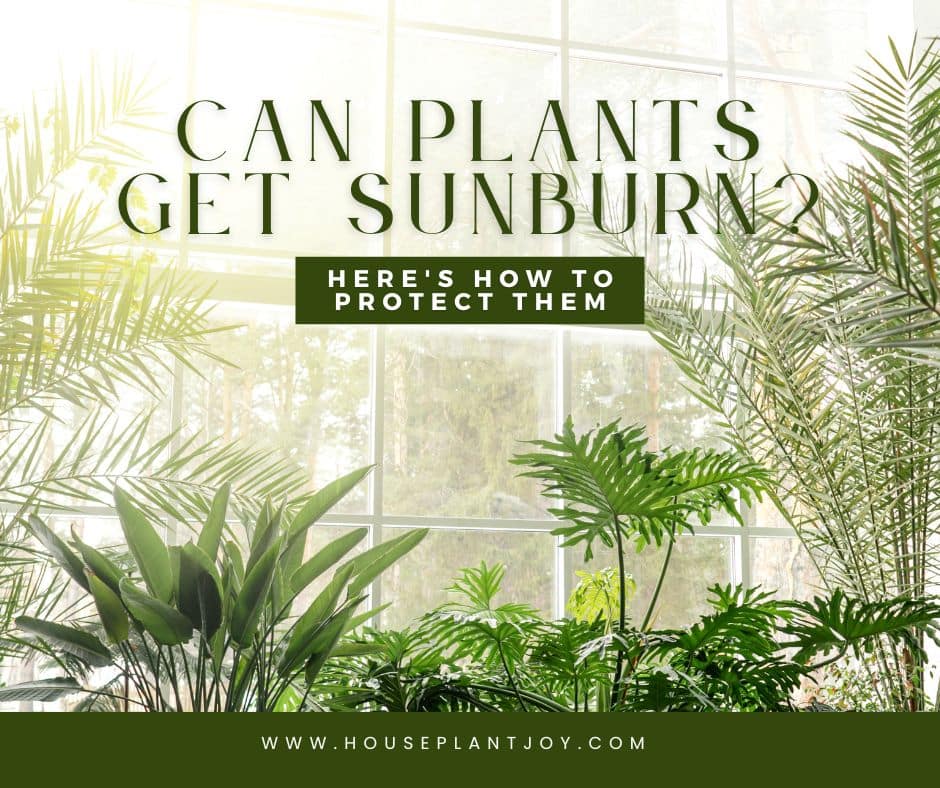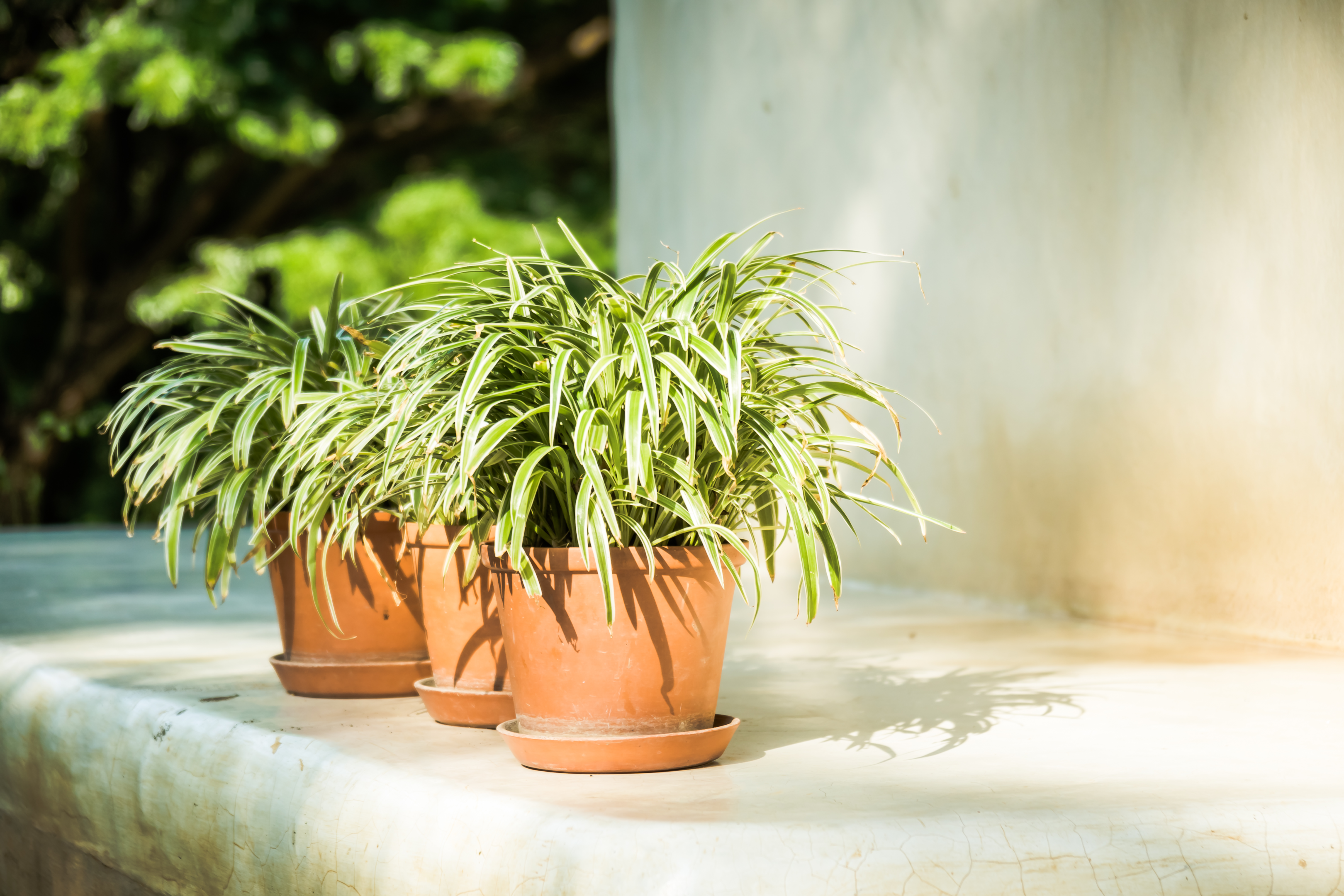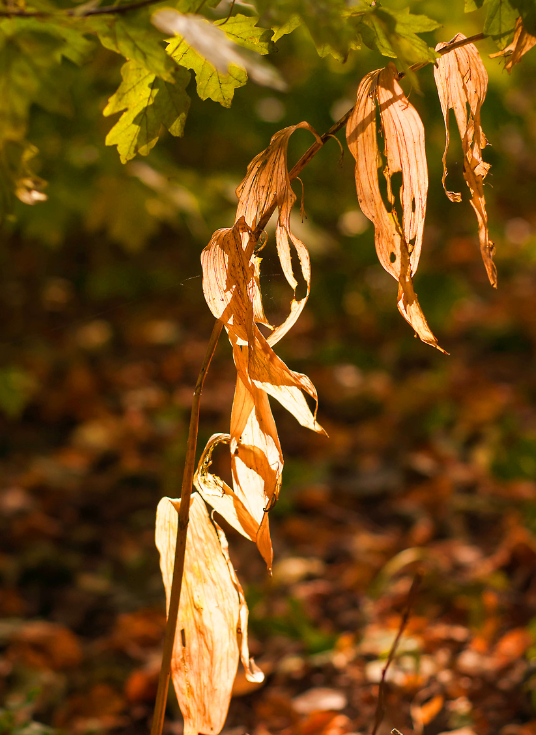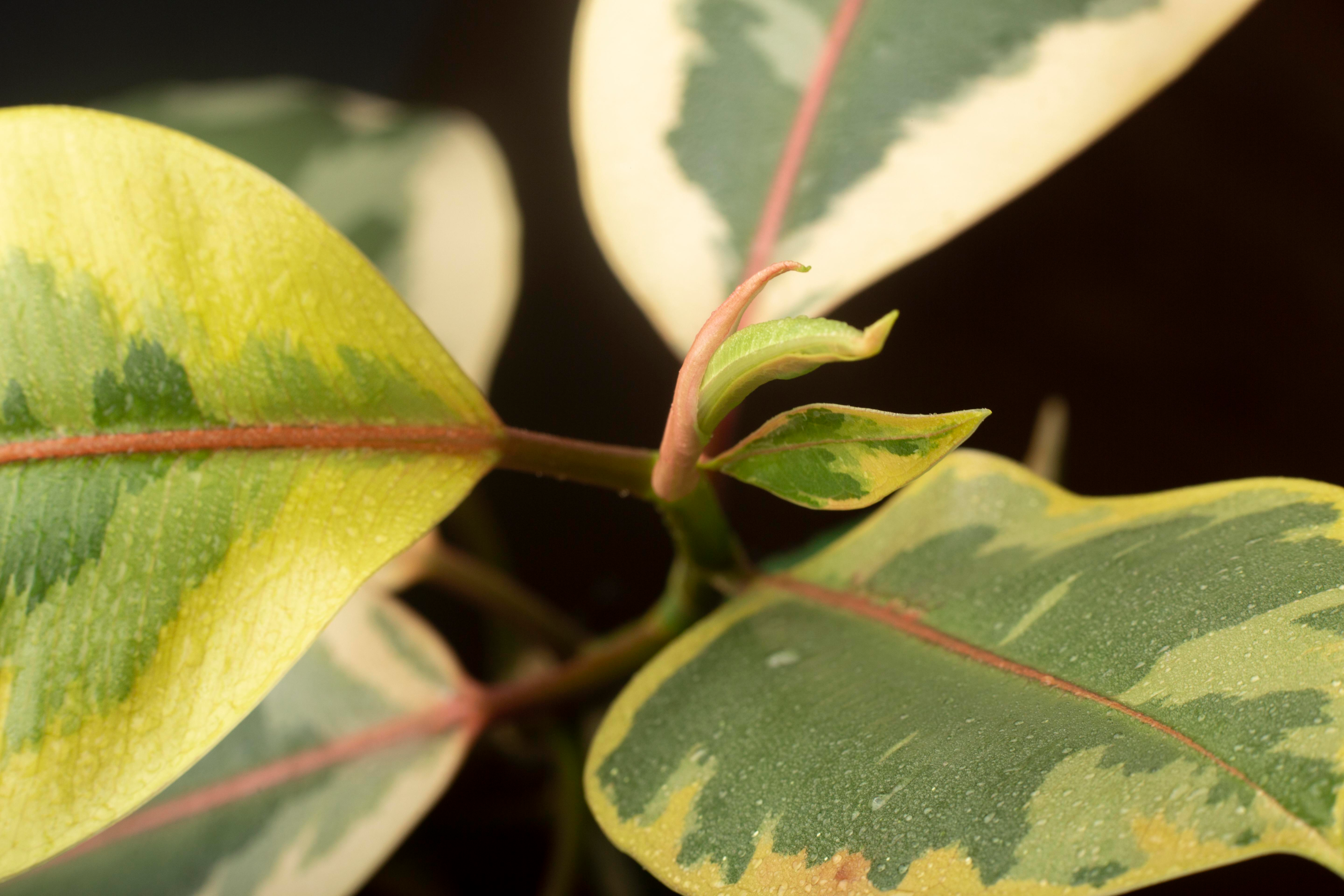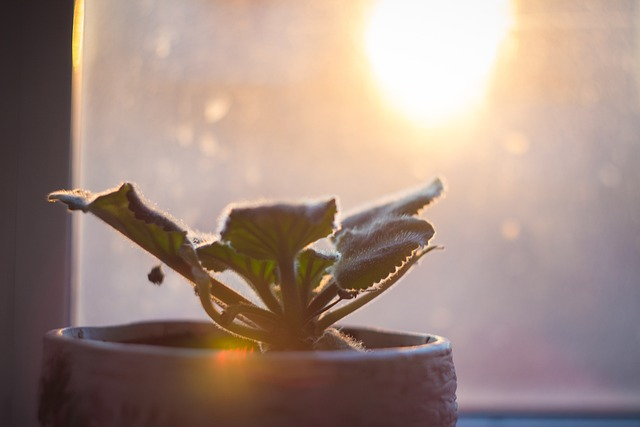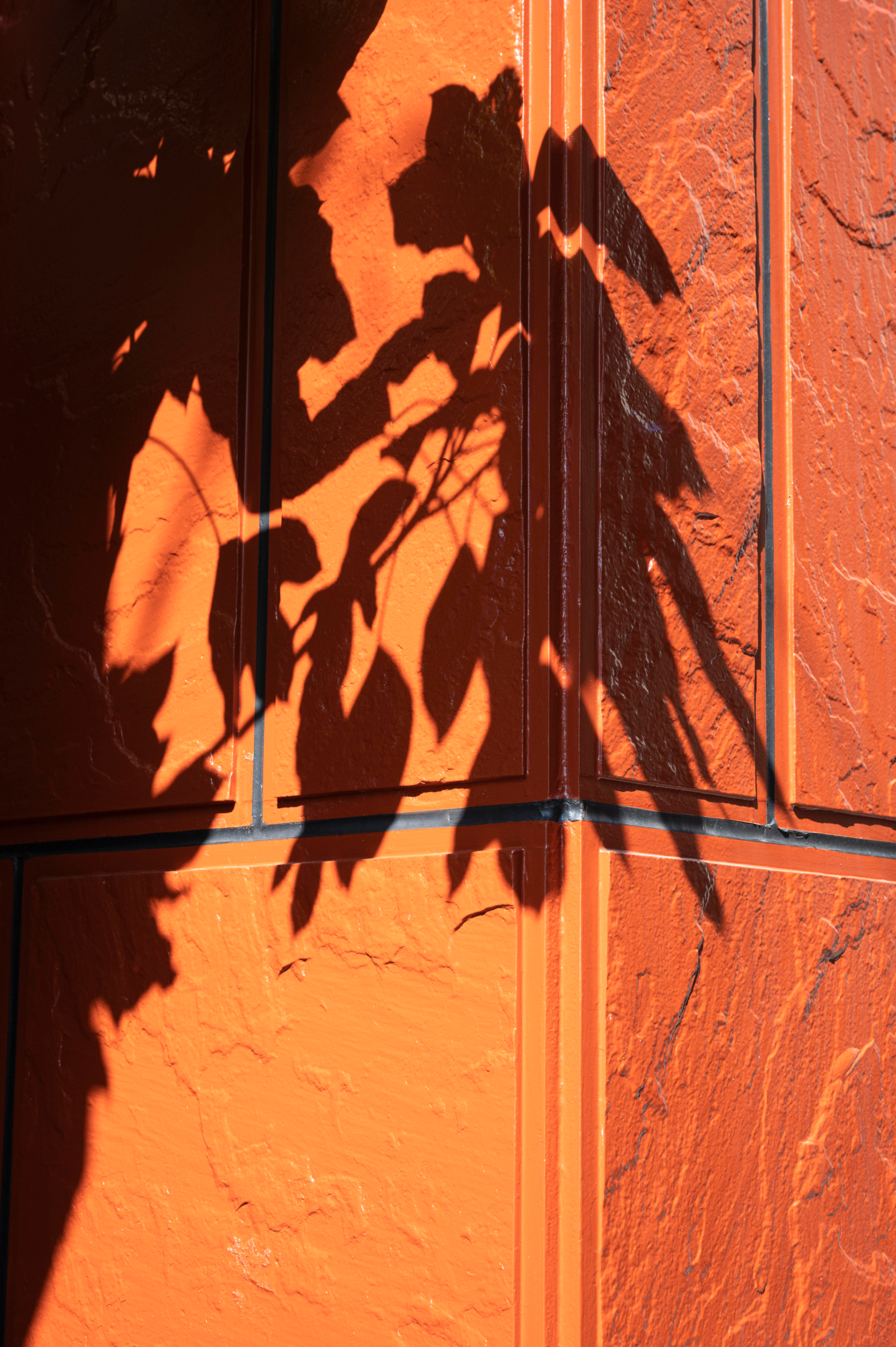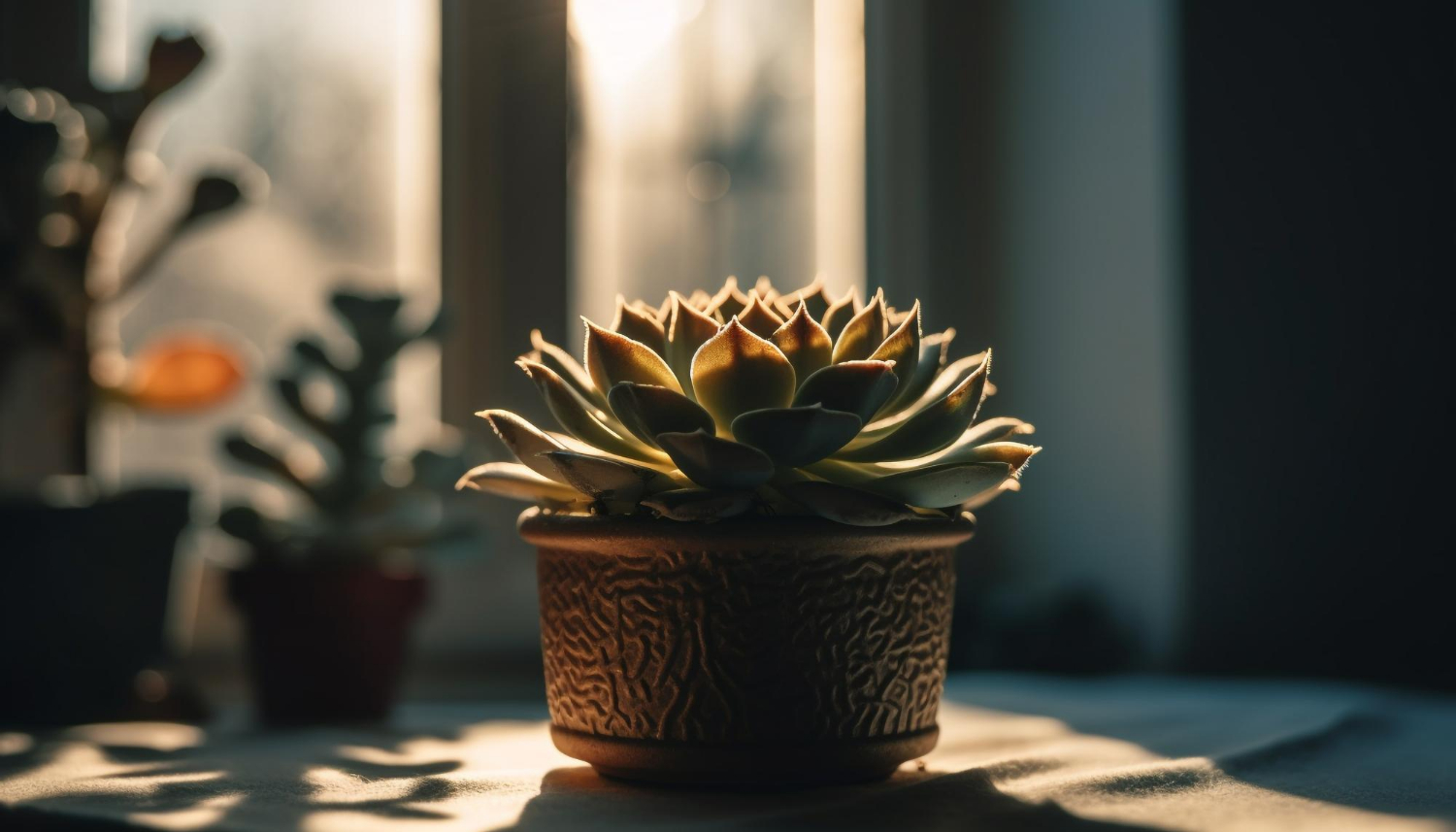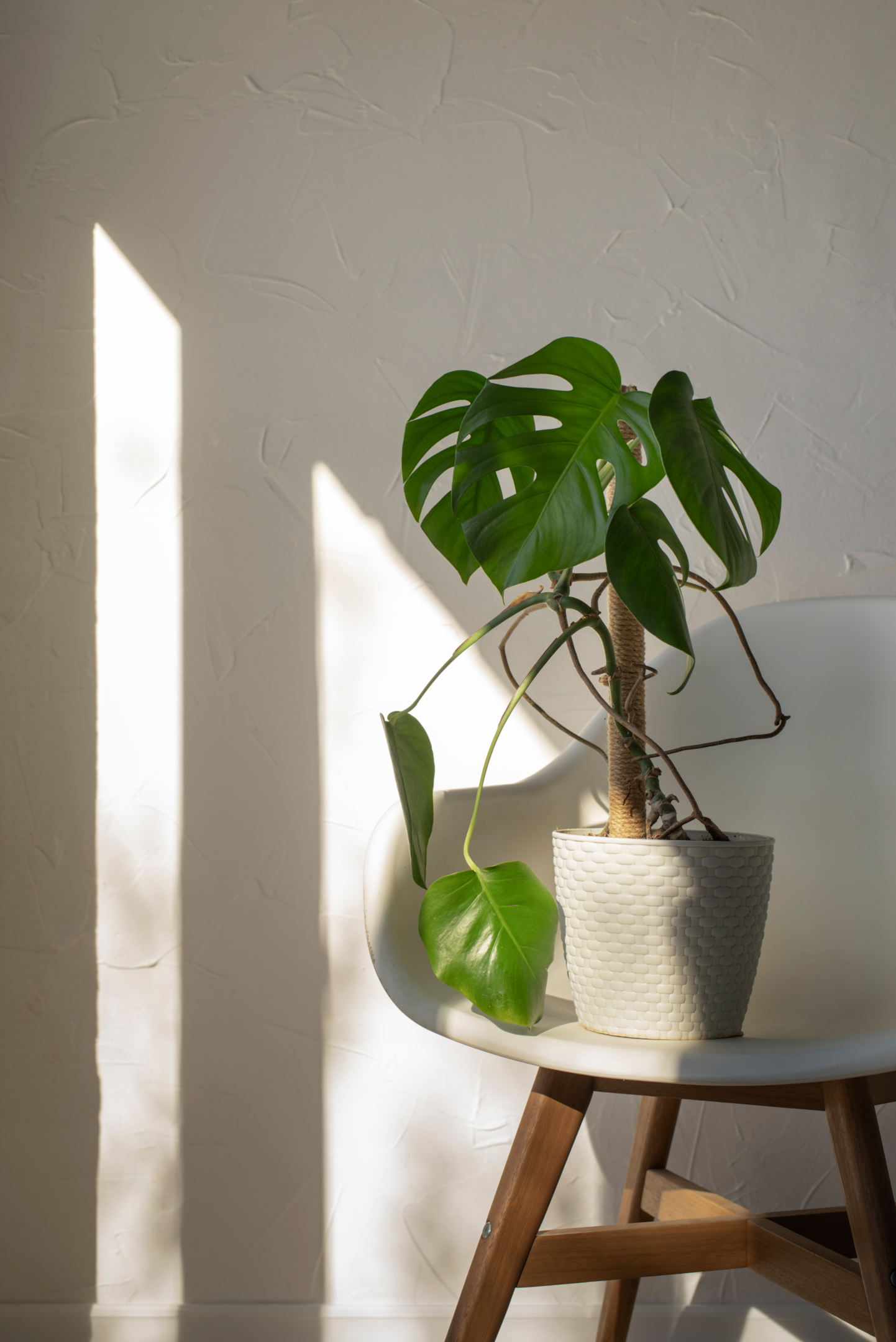HousePlantJoy is supported by our audience. When you purchase through one of our links, we may earn a small affiliate commission. As an Amazon Associate I earn from qualifying purchases. Your cost is not affected.
==================
Hey there! So, you know how we love having lots of sunlight to feel good and energized? Well, our plants also love the sun, but like us, they can get sunburned too if they get too much of it. Can plants get sunburn? Absolutely!
Imagine this: you move your houseplants outside or put them near a sunny window during the warmer months, thinking they’ll enjoy the extra light. But, surprise! They might end up with sunburned leaves. Ouch!
Unfortunately, we can’t apply sunscreen to our plants, but there are some nifty tricks to help them avoid those painful burns. Learn how to protect your green companions from sunburn and keep them healthy and happy!
The Causes of Plant Sunburn
Do you know how humans get sunburned from spending too much time under the scorching sun? Plants can get sunburned too, but it’s different for them. But here’s the twist: the real culprit behind their sunburn is the lack of soil moisture.
So, imagine this: You’ve got a beautiful indoor plant sitting by the sunny window or placed your outdoor plants in direct sunlight to give them that natural glow. But boom, after an hour, your plant got a sunburn!
Both ordinary sunlight and UV light can spell trouble for them. But it’s not the light that does the damage; the combination of intense sunlight and lack of water in the soil takes a toll on your green friends. When plants don’t have enough water in their soil, they become desiccated and weakened. This dehydration makes them more susceptible to the harmful effects of the sun’s rays.
Watering Midday
Plant parents are often told not to water their plants in the middle of the day to avoid sunburn risks. That’s true, but there’s a little catch to it. This applies to plants with leaves with tiny plant hairs called trichomes. Those plant hairs can trap water, and when the sun hits them, it intensifies the sunlight, causing burns to the leaves.
But don’t worry! You’re in the clear if your plants have smooth, hairless leaves. Watering plants in the middle of the day won’t harm them. So you can keep your leafy buddies hydrated whenever you want!
Other Causes Of Plant Sunburn
Other things that can stress out our plants. One is low humidity – when the air gets dry; it can be challenging for our green friends. Also, picture this: a chilly night followed by a blazing midday sun – that temperature swing can mess with plants, too.
And you know those horticultural practices? Like how do we trim or shape our trees and shrubs? Well, if we go overboard with pruning, it can leave lower branches and bark vulnerable to too much light from the sun, and that’s not good. Watch out for those walls, especially if they’re concrete or brightly colored. They can heat up and radiate intense light, which can be a disaster for some plants that must be suited for those spots.
So, let’s keep our plant buddies happy and stress-free by being mindful of these things!
Types of Plant Sunburn
When a plant gets way too much sun, it’s like a sun overload, and it can lead to two different issues: sunburn and sunscald.
Sunburn
The sunburned plant is like when leaves get overexposed to the sun and start losing color. They can turn pale green, white, yellow, or brown – it’s not a good look. The worst part is that it usually starts at the veins of the leaves and then spreads out to the tips, causing severe damage.
Sunscald
Sunscald is a different story. It mainly affects the bark and the fruit. Just imagine how your skin gets cracked and dry when dehydrated – that’s what happens to the bark and fruit when they get too much sun. And these cracks can invite pesky insects and diseases to come and wreak havoc on our poor plants. It’s like opening the door to unwanted guests!
Sunscald can even mess with the vital part of the tree called the cambium layer, which is just below the bark. This layer is like a highway for flowing water and nutrients through the tree. But if it gets damaged, that flow gets disrupted, and the foliage above the injured area starts dying off.
How Does a Sunburned Plant Look
When a plant gets sunburned, it doesn’t look too happy, just like when we forget to apply sunscreen! The leaves of the sunburned plant might start showing some signs of damage. They could turn pale green, white, yellow, or brown. You might notice discoloration starting from the leaf veins and spreading to the tips.
It’s like the outer layers of the leaves get fried from too much sunlight, and that’s why you see those light-colored patches on them. Imagine your plant’s leaves looking like they’ve had too much time in the sun, and you’ll get the idea.
Sometimes, sunburn can be the first and only sign of leaf sunscald in plants; there is no difference between leaf sunscald and sunscald. They’re both terms used to describe the damage that can occur to plants when they’re overexposed to light from the sun. So it’s essential to keep an eye out for these changes. Just like we take care of our skin after a sunburn, we need to be mindful of our plant buddies and provide them with the right amount of sunlight to avoid this sunburn!
How Can You Tell if Your Plants Got a Sunburn?
Do you know how your skin changes color when you stay in the sun too long? Well, the same thing can happen to your houseplants! Instead of turning bright red like us, their leaves might go for a yellow or white look. And if it’s a nasty sunburn, they could even get a little crispy and brown around the edges. Ouch!
But here’s the catch – sometimes, leaf color changes can happen for other reasons too. Overwatering or not getting enough light can also mess with their leaf color.
So, how do you figure out if it’s the sunburn causing the color change? Here’s a clue – usually, only the leaves on top, the ones where the sun hits directly, will be affected. The lower leaves should stay the same, getting a bit of shade from the upper ones.
Keep an eye out for these signs, and you’ll know how to tell if your plants are feeling the heat a little too much!
Shielding Your Green Pals: Tips to Prevent Plant Sunburns
You won’t believe how quickly plants can get sunburned – in just a few hours! Don’t worry; we’ve got you covered on how to prevent this plant disaster. Below are the tips to protect plants from getting a sunburn.
- Choose the Right Spot: Find a spot that suits your plants’ sunlight preferences. If they like a shady spot, keep them away from the intense bright sun.
- Gradual Sun Exposure: For indoor plants moving outdoors, introduce them to sunlight slowly. Start with a bit of sun and gradually increase the exposure.
- Shade and Shelter: Protect your plants during the hottest parts of the day by providing shade. Trees, awnings, or even umbrellas can do the trick.
- Water Wisely: Keep your plants well-hydrated, especially during hot spells. Hydrated plants handle the sun’s heat better.
- Mulch: Apply mulch around the base of your indoor and outdoor plants to retain moisture and keep the soil cooler.
- Pruning with Care: Avoid exposing delicate branches and bark to too much sun when trimming your plants. A light trim is good, but too much can cause trouble.
- Healthy Soil: Ensure your soil is healthy and drains well, helping your plants thrive.
With these tips, your plants will stay sunburn-free and enjoy the sunshine correctly!
Treating Sun-Scorched Plants
Once your plants get sunburned, there’s not much you can do to reverse it. So, it’s time for some damage control!
First, those sunburned leaves won’t magically heal and return to their standard color. It’s like a plant’s version of a permanent tan! So, your best move is to snip off those damaged leaves and move the plant to a spot with less direct sun. Give it a little break from that harsh sunlight.
If your plant usually chills before a sunny window, you can still let it soak up a bright light, but with a little filter. Hang a sheer curtain to shield it from the direct sun. That way, it gets the light it needs without the sunburn risk.
Plants are pretty tough, just like us when we get a sunburn. So, the good news is, they can recover from sunburn, too! It’s all about giving them the proper treatment and care.
Is It Necessary to Keep My Plants Away From the Sun?
Hey, don’t worry! You don’t have to banish your plants from the sun entirely. They need sunlight to stay happy and healthy, just like we need our daily dose of Vitamin D. But, here’s the catch – you have to find the sweet spot, you know?
Each plant has its sun preferences. Some are sun-worshippers and can handle direct light like a boss, while others prefer a little shade or indirect sunlight. So, step one: get to know your plant buddies and what they like.
Understand Lighting
Light is like their special fuel for energy, and they use it to make something called chlorophyll, which is like their secret recipe for survival. It’s a magic ingredient that helps them soak up the sun’s energy and grow big and strong.
But here’s the thing: not all plants have the same light cravings. Some are like total sun worshippers, like those fancy crotons. They need lots of direct sunlight to stay vibrant and happy. If they don’t get enough, they’ll start sulking and losing their color, and nobody wants that, right?
On the other hand, we have low-light plants, the chill and laid-back plants of the gang. They prefer a more relaxed light vibe and will start baking if left in the hot sun for too long.
We have low-light plants, medium-light plants, and high-light plants. But what does this mean?
- Low-Light Plants: They’re the chill ones who don’t need much. They’re cool with 2 to 4 hours of indirect sunlight a day. They’re happy with a bit of peek of sunshine, nothing too intense.
- Medium-Light Plants: They’re like the ones who need a bit more attention. They prefer at least 4 to 6 hours of indirect sun a day.
- High-Light Plants: They’re like the sun worshippers of the gang. They need a solid 6 to 8 hours of direct sunlight every day. They thrive on the sun’s rays and can’t get enough!
Conclusion
So there you have it, folks! Plants can get sunburned, just like us, but it’s all about finding that perfect balance of sunlight and water. Do you know how you’re careful with your skin when you’re out in the sun? You must be just as cautious with your houseplants!
Knowing your plant’s light preferences is crucial to their well-being. It’s like giving them a little sunscreen protection. If your plants do end up with a sunburn, don’t worry! You can remove the damaged leaves and move them to a better spot. With a bit of love and care, they’ll bounce back and continue to beautify your surroundings.
So, let’s be mindful of our plant buddies and ensure they get just the right amount of sunlight and water. Happy gardening, and keep those green pals sunburn-free!
FAQs
Should I cut off sunburned leaves?
Yes, cutting off sunburned leaves would be best to promote the plant’s overall health and encourage new growth. Sunburned leaves are often damaged, and keeping them on the plant can divert resources away from healthy parts. Trimming them off will prevent fungal infections that may develop in damaged areas.
Can a plant recover from sunburn?
Yes, a plant can recover from sunburn under the right conditions. The recovery depends on the sunburn’s severity and the plant’s overall health. Mild sunburn, characterized by minor discoloration or slight damage to the leaves, is more likely reversible than severe sunburn with extensive tissue damage.
Can sunburnt plants recover on their own?
Yes, plants can recover from sunburn, especially if the damage is not severe. With proper care and attention, the plant may produce new growth and gradually regain its health.
?? Houseplant Lovers Unite! ??
? Hey there, green thumbs and plant enthusiasts! Are you looking to add a touch of nature to your life? ?? Look no further than Houseplant Joy! ??
?? Let’s grow together! Follow us on Facebook, Instagram, and Twitter to embark on an exciting journey of houseplant bliss. ??
? Facebook: Dive into the world of houseplants and tips at facebook.com/houseplantjoyblog. ??
Welcome to houseplantJoyblog, your ultimate destination to dive into the captivating world of houseplants and gardening tips. Whether you’re a plant enthusiast or just starting your green journey, our Facebook page is here to nurture your passion for leafy and lush.
? Instagram: Immerse yourself in a visual feast of stunning houseplant inspiration at instagram.com/houseplantjoy20. ??
Welcome to houseplantJoy20, a captivating visual feast celebrating houseplants’ beauty and wonders! Immerse yourself in an endless gallery of stunning houseplant inspiration that will ignite your creativity and spark new ideas for your plant collection.
? Twitter: Stay in the loop with our green community and stay updated on the latest trends in the houseplant world at twitter.com/HouseplantJoy. ??
Stay in the loop with the Houseplant Joy community on Twitter, your go-to source for all things houseplants and gardening trends. We are your green companions on this exciting journey, keeping you updated on the latest happenings in the ever-evolving world of indoor greenery.
? Why Should You Join Us? ?
? Get insider secrets: Unearth the best-kept secrets to keep your plants thriving and blooming like never before. ??
? Expert advice: Gain access to our team on Facebook, Twitter, and other social media channels, and meet our ,gardening experts eager to help you on your plant journey. ???
? Engage with like-minded souls: Connect with fellow plant lovers, exchange stories, and build a supportive community. ??
?? Join us today! Follow Houseplant Joy on Facebook, Instagram, and Twitter for daily inspiration and a blooming good time! ?? #HouseplantJoy #GreenThumbsUnite #HouseplantLove

